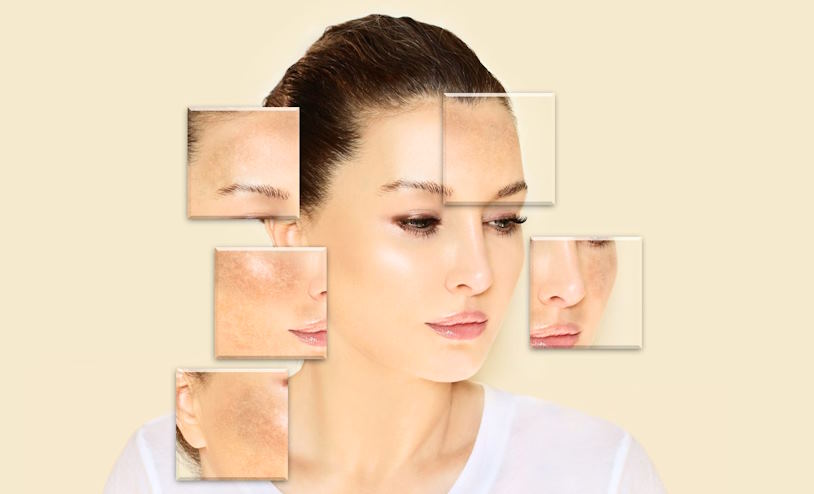
Skincare Tips for Fighting Early Signs of Aging
Ever caught a glimpse of yourself in the mirror and thought, “Is that a wrinkle I see?” It’s like discovering a tiny dent on your new car—unexpected but fixable! If you’re starting to notice the first signs of aging, don’t worry—you’re not alone. Just like you wouldn’t ignore that car dent, you can take steps now to prevent those early signs of aging from getting worse.
Understanding the Early Signs of Aging
Before we get into the how-tos, let’s talk about what to look for. Early signs of aging can sneak up on us like uninvited guests at a party. They might start as fine lines around your eyes, a little loss of firmness, or maybe even some uneven skin tone. It’s like your skin is trying to whisper, “Hey, I need a bit more care!”
What to Look For:
- Fine Lines: Small, subtle lines that can appear around your eyes or mouth.
- Wrinkles: Slight creases that become more noticeable as you get older.
- Uneven Skin Tone: Areas where your skin might look patchy or have dark spots.
- Loss of Elasticity: Skin that feels a bit less firm and more saggy.
Understanding these signs is the first step in your skincare adventure. It’s like knowing where the cracks are in your garden before you start fixing them.
Establish a Consistent Skincare Routine
Just like you wouldn’t go a day without brushing your teeth, your skin needs a daily routine to stay healthy. Establishing a consistent skincare routine is key to keeping those early signs of aging in check. Let’s break it down into three easy steps.
Cleansing
Imagine your skin is a whiteboard. Throughout the day, it collects all kinds of “marks” from dirt, sweat, and makeup. A good cleanser helps to wipe those marks away, so your skin can start fresh each day.
What to Use: A gentle cleanser that doesn’t strip your skin of its natural oils. Look for ingredients like hyaluronic acid, which helps to keep your skin hydrated.
Moisturizing
Think of a moisturizer as a cozy blanket for your skin. It locks in hydration and keeps your skin soft and plump. A good moisturizer is like a friendly hug for your face.
What to Use: A moisturizer with ceramides or glycerin to keep your skin barrier strong and hydrated.
Sunscreen
Sunscreen is like your skin’s personal shield against the sun’s harmful rays. Even on cloudy days, UV rays can reach your skin and cause damage.
What to Use: A broad-spectrum SPF of at least 30. Ingredients like zinc oxide and titanium dioxide offer great protection.

Here’s a handy table to help you remember these steps:
| Step | Purpose | Product Type | Example Ingredients |
| Cleansing | Removes dirt and impurities | Gentle Cleanser | Hyaluronic Acid |
| Moisturizing | Keeps skin hydrated and plump | Moisturizer | Ceramides, Glycerin |
| Sunscreen | Protects from UV damage | Broad-Spectrum SPF | Zinc Oxide, Titanium Dioxide |
Incorporate Anti-Aging Ingredients
Let’s talk about some powerful ingredients that can help you combat those early signs of aging. These are like the special tools in your skincare toolkit—each one has a unique job!
Retinoids
Retinoids are like a personal trainer for your skin. They help boost collagen production, which can reduce wrinkles and fine lines.
What to Look For: Retinol or prescription-strength retinoids if you’re ready for a more intense treatment.
Vitamin C
Think of Vitamin C as your skin’s sunshine in a bottle. It brightens your complexion and helps to even out your skin tone.
What to Look For: Serums or creams containing Vitamin C, like ascorbic acid.
Hyaluronic Acid
Hyaluronic Acid is like a tall glass of water for your skin. It helps keep your skin hydrated and plump.
What to Look For: Moisturizers or serums with hyaluronic acid.
Here’s a quick list of these hero ingredients and their benefits:
- Retinoids: Boost collagen, reduce wrinkles.
- Vitamin C: Brightens skin, evens skin tone.
- Hyaluronic Acid: Hydrates skin, maintains plumpness.
Maintain a Healthy Lifestyle
Your skin isn’t just about what you put on it—what you do for your body also matters. It’s like planting a garden: you need both good soil and regular care for the best results.
Balanced Diet
Eating a variety of fruits, vegetables, and nuts is like giving your skin the nutrients it needs to thrive. Foods rich in antioxidants and vitamins support healthy skin from the inside out.
What to Eat: Berries, leafy greens, nuts, and fish.
Hydration
Drinking water is like watering your garden—it keeps everything looking fresh and vibrant.
How Much to Drink: Aim for about 8 glasses of water a day, or more if you’re active.
Sleep
Quality sleep is your skin’s time to repair and rejuvenate. It’s like giving your skin a nightly spa treatment.
How Much Sleep: Aim for 7-9 hours a night for the best results.

Avoid Common Skincare Mistakes
We’ve all made mistakes in our skincare routines—like using too many products or forgetting sunscreen. It’s like baking a cake and forgetting to preheat the oven!
Over-Exfoliating
Exfoliation is important, but too much can irritate your skin. It’s like scrubbing a surface until it’s damaged.
Tip: Stick to exfoliating 1-2 times a week.
Neglecting Sunscreen
Skipping sunscreen is like leaving the house without an umbrella on a rainy day.
Tip: Apply sunscreen every day, even if you’re staying indoors.
Ignoring Ingredients
Not all skincare products are created equal. Using the wrong products can be like trying to fix a flat tire with duct tape.
Tip: Read labels and choose products suited to your skin type.
Regularly Visit a Dermatologist
Think of your dermatologist as a skilled mechanic for your skin. They can help with everything from routine maintenance to fixing specific issues.
Professional Advice
A dermatologist can provide personalized advice based on your skin’s needs and help you stay ahead of potential problems.
Tip: Schedule a check-up at least once a year to keep your skin in top shape.

